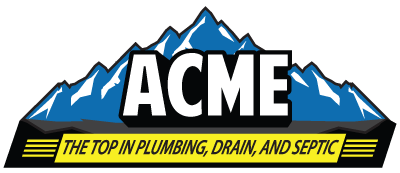Emergency Guide: What to Do When You Experience a Sewer Line Backup
Experiencing a sewer line backup can be a homeowner's worst nightmare. Not only is it unpleasant, but it can also lead to significant damage to your property and pose serious health risks. Knowing what to do in such an emergency can help mitigate damage and restore your home's plumbing system more quickly. Here’s a comprehensive guide on what to do when you experience a sewer line backup:
Recognizing the Signs of a Sewer Line Backup
Before diving into the emergency response, it's crucial to recognize the signs of a sewer line backup:
Multiple Drain Clogs: If multiple drains in your home are clogging simultaneously, it's often a sign of a sewer line issue.
Gurgling Sounds: Hearing gurgling sounds from your drains, toilets, or pipes can indicate a blockage in the main sewer line.
Water Backing Up: Water backing up from drains or toilets is a clear sign of a blockage.
Foul Odors: The smell of sewage in or around your home is a strong indicator of a sewer line problem.
Slow Drains: While one slow drain might just be a localized clog, slow drainage throughout the house often points to a sewer line issue.
Immediate Steps to Take
If you suspect a sewer line backup, take the following immediate steps to minimize damage and health risks:
Stop Using Water: Immediately stop using water in your home. This includes sinks, toilets, and appliances like dishwashers and washing machines. Any additional water can exacerbate the backup and cause more flooding.
Turn Off the Main Water Supply: If you can locate your home's main water shut-off valve, turn it off. This will prevent any more water from entering your plumbing system and contributing to the backup.
Avoid Contact with Sewage: Sewer backups can contain harmful bacteria and contaminants. Avoid direct contact with the water and wear protective gear like gloves, boots, and masks if you need to handle anything.
Ventilate the Area: Open windows and doors to ventilate the area and disperse any noxious fumes from the sewage.
Clear the Area: Remove any valuable or vulnerable items from the affected area to prevent further damage.
Contacting a Professional
Once you've taken immediate steps to control the situation, it's crucial to contact a professional plumbing service like ACME Plumbing who specializes in sewer line issues. Here’s what to expect:
Inspection and Diagnosis: The plumber will likely use a camera inspection to determine the cause and location of the blockage. This helps in formulating an effective solution.
Clearing the Blockage: Depending on the cause, the plumber might use a variety of drain clearing and cleaning methods to clear the blockage, such as hydro-jetting (high-pressure water cleaning) or using a mechanical auger.
Repairing the Line: If the inspection reveals damage to the sewer line, repairs might be necessary. This can range from simple patching to more extensive pipe replacement.
Preventive Measures
After resolving the immediate crisis, consider taking preventive measures to avoid future backups:
Regular Maintenance: Schedule regular inspections and maintenance of your sewer line to catch potential problems early.
Proper Disposal: Avoid flushing items that can cause blockages, such as grease, wipes, and sanitary products. Be mindful of what goes down your drains.
Install a Backwater Valve: This device can prevent sewage from backing up into your home, providing an extra layer of protection.
Landscaping Considerations: Be mindful of tree roots, which can infiltrate and damage sewer lines. Avoid planting trees or large shrubs near your sewer line.
Dealing with a sewer line backup is stressful, but knowing how to respond can help you manage the situation more effectively. By taking immediate action, contacting professionals, and implementing preventive measures, you can minimize damage and reduce the risk of future incidents. Remember, regular maintenance and mindful usage of your plumbing system are key to preventing such emergencies.
